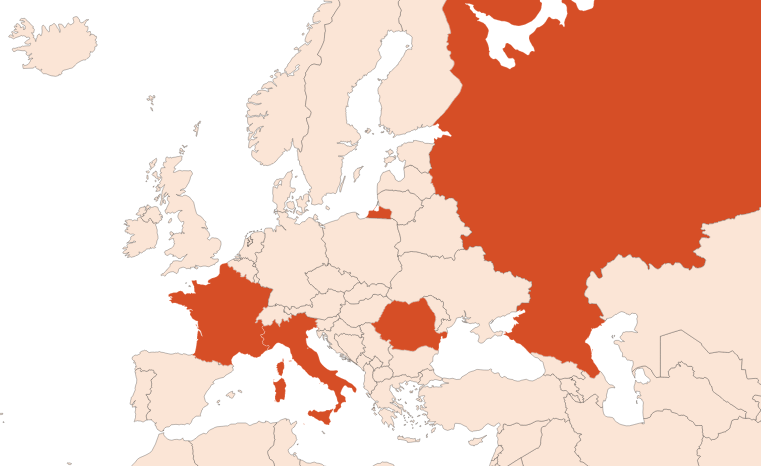
Wormwood oil
Woormwood is a plant of the Asteraceae family and the genus Artemisia L.
Asteraceae family is one of the most important family in the fragrance world, it includes for example all the Artemisia (Wormwood, Armoise, Tarragon, Davana) and all the Tansy, the Everlasting and the tagetes.

Do you sell any of the raw materials? Would you like to let our users know?
Send an email to fournisseurs@scentree.coto learn about our advertising opportunities.
Do you sell any of the raw materials? Would you like to let our users know?
Send an email to fournisseurs@scentree.coto learn about our advertising opportunities.
General Presentation
-
CAS N° : 8008-93-3
-
EINECS number : 84929-19-1
-
FEMA number : 3116
-
Density :
-
Optical rotation : Donnée indisponible
-
Allergens : Geraniol - D-Limonene - Linalool
-
Refractive Index @20°C : Donnée indisponible
-
Volatility : Heart/Base
-
Price Range : €€€
-
Appearance : Green liquid
Uses
Other comments :
It is one of the essential oils with thujone (it contains about 40%) which explain its high toxicity. Other essential oils contain thujones: Cedar Leaf EO, Camphorated Wormwood EO, tansy, thuja or Dalmatian Sage EO.
Another name for absinthe is ''wormwood ''.
Absinthe is known worldwide for the beverage made with its essential oil which has been banned in many countries because of its excessive alcohol content, but also because of thujone. However, in France, since 2011, the consumption of this drink has been authorized again, provided that the rate of thujone is very limited. The excessive consumption of absinthe has also given its name to a disease: absinthism. Thujones have long given a very bad press to the plant.
Stability :
The esters identified in this raw material can form their corresponding acid in stability tests
The terpenes identified in this raw material can polymerize when they are oxidized
Uses in perfumery :
Used in woody aromatic perfumes.
Major Components :
- Beta-Thuyone (30-45%)
- Sabinyl Acetate (30-35%)
- Sabinene (≈3%)
- Sabinol (≈3%)
- Alpha-Tuyone (≈3%)
- Geranyl Propionate (≈2%)

Photo credits: ScenTree SAS
Botanique :
Artemisia absinthium L.
Synonyms : Artemisia absinthium var. absinthium // Absinthium officinale Brot.
Chemotypes :
It is necessary to differentiate several varieties of absinthe.
Artemisia absinthium, otherwise known as Grande Wormwood.
Artemisia pontic, otherwise called Petite Wormwood.
Artemisia ludoviciana, otherwise known as White or Silver Wormwood.
Extraction process :
Wormwood is a plant that grows very easily up to 1 meter high. Its leaves change from gray to brown-green in summer. It is an indicator for its harvest. The plant shoot can be optimized by cutting the blooming plants: the plant produces more branches and therefore leaves during the next shoot. Furthermore, given its ephemeral nature, the propagation of a crop can be done by taking plant cuttings.
The absinthe harvest takes place from July to August. During these months, the leafy twigs are mowed and then dried in the shade (to prevent sunburn on the plants) or in the oven for a few hours.
The crushed leaves are steam distilled to collect an essential oil by decantation in a florentine vase.
The essential oil of wormwood contains a high rate of thujones with a toxic effect on the body. Thujones can be removed by reprocessing the oil with a fractional distillation.
Geographic origin :
Data not available.
Regulations & IFRA
-
IFRA 51th : This ingredient is restricted by IFRA
Annexe I :
Some regulated synthetic ingredients are found in nature and in certain proportions in natural ingredients. This presence in nature has to be taken into account when calculating limits of use recommended by the IFRA. In case you do not know these concentrations, you can use the ones estimated by the IFRA. Here they are :
| List of regulated compounds contained in this ingredient | ||
|---|---|---|
| Regulated ingredient name | CAS N° | Estimated Concentration |
| Geraniol | 106-24-1 | 0,1 |
| alpha-Thujone | 546-80-5 | 3 |
| beta-Thujone | 471-15-8 | 42 |
| Thujone | 76231-76-0; 1125-12-8 | 45 |

